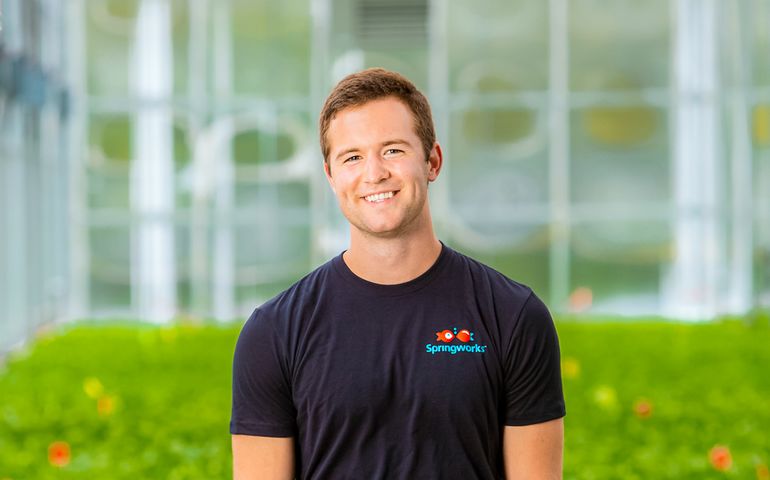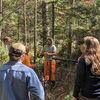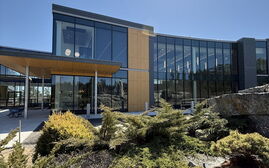Next: Trevor Kenkel, aquaponics farmer, grows produce, fish and a business
 Photo / Tim Greenway
Trevor Kenkel founded Springworks Farm in 2014 as an organic aquaponics operation in Lisbon. It’s now New England’s largest aquaponics farm.
Photo / Tim Greenway
Trevor Kenkel founded Springworks Farm in 2014 as an organic aquaponics operation in Lisbon. It’s now New England’s largest aquaponics farm.
Growing up in Montana, Trevor Kenkel liked fishing at a creek near his house. Eventually, the wildlife disappeared due to chemical effluent from a nearby farm. In reaction, he looked into organic gardening and came upon aquaponics, a chemical-free system in which waste produced by farmed fish supplies nutrients for plants grown hydroponically in greenhouses, which in turn purify the water returned to the fish tanks. He started selling lettuce to restaurants, then moved to Maine and continued to grow the business while at Bowdoin College.
In 2014, Kenkel bought a 168-acre farm in Lisbon and started Springworks Farm. Today, Springworks is New England’s largest aquaponics grower. With nearly 40 employees, it sells organic lettuces and herbs in all 184 Hannaford supermarkets and Whole Foods’ New England stores, and farmed tilapia to Harbor Fish in Portland. Recently, Kenkel opened a third greenhouse and plans to bring greenhouse space to nearly 500,000 square feet by 2026 — a $4 million project helped by a $300,000 Maine Technology Institute grant.
Mainebiz: While growing Springworks at Bowdoin, did you have startup help?
Trevor Kenkel: We had a committed group of investors and a great board. I’ve been very intentional about matching the size of the business with the folks and expertise on our team. We tried not to get too big too fast.
MB: Who were your early investors?
TK: Family, friends, anyone who would listen. It was small-scale, but I had been growing for six years. I had a demonstration greenhouse in Montana and I was diligent about getting time-lapse photography to validate how quickly things grew and how that compared to hydroponic or conventional agriculture. It was important to demonstrate that we could grow products at a speed that’s competitive while remaining certified organic.
MB: How did you learn how to run an aquaponics operation?
TK: To a certain extent, trial and error. We have hundreds of crop cycles per year, so we can get an enormous amount of information from each cycle.
MB: What’s your output?
TK: With our third greenhouse online, we’re capable of growing about 2 million heads of lettuce per year. Before that, it was a little under 1 million heads.
MB: Why do you grow tilapia in particular?
TK: Tilapia is a well-studied fish in recirculating aquaculture systems. Before our third greenhouse, sales to Harbor Market were about 60,000 pounds per year. Now we’re growing about 200,000 pounds per year. We’re looking at bigger partnerships with retail or food service distributors.
MB: What’s next?
TK: We’re always looking for talented folks to join our team. Ultimately, these greenhouses need to be run by people.
MB: If a child were fishing in a creek near Springworks, what would they think?
TK: One thing we do a lot is bring in school tours. I love showing our system to kids.














0 Comments